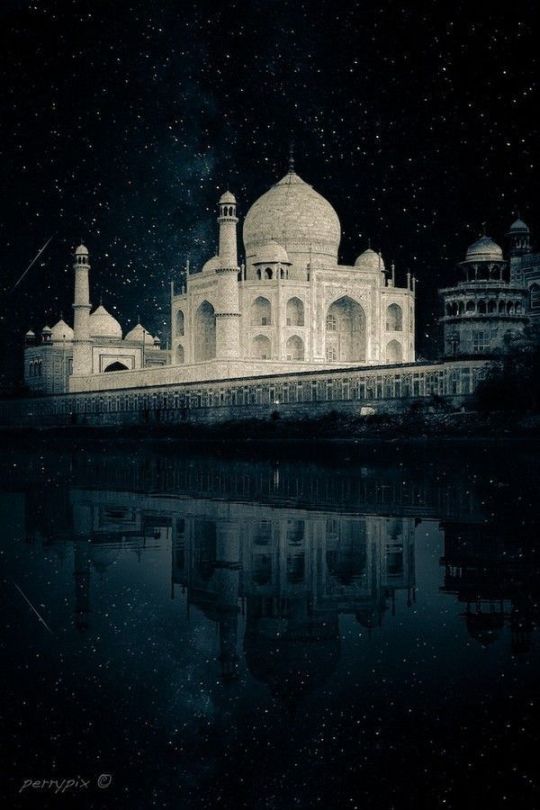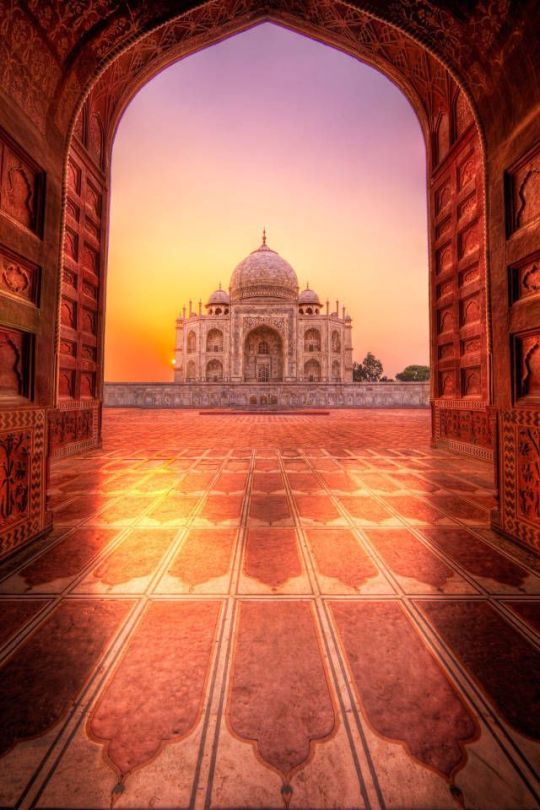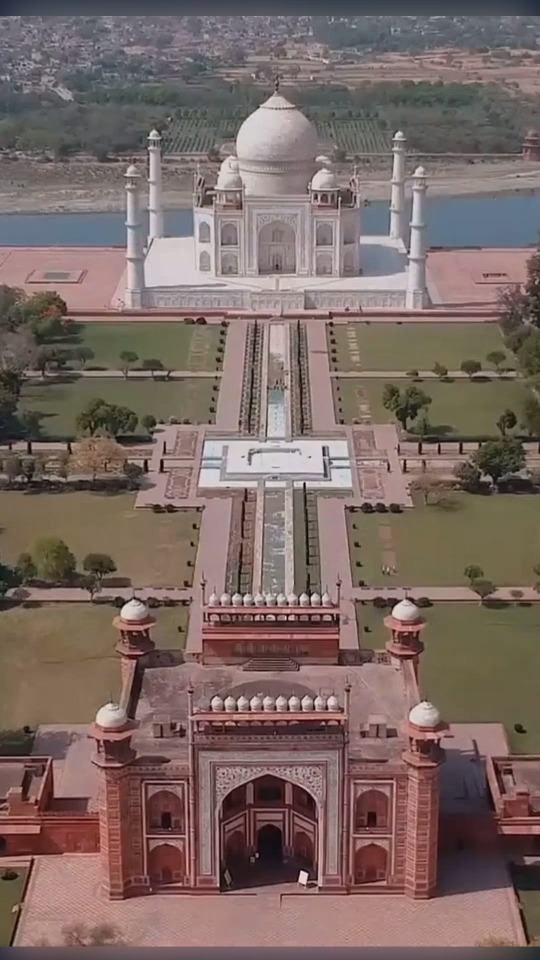Photo

There are different types of attachment anxiety, and they play a role in helping us connect to each other. How people connect with others on an emotional level is likely influenced by childhood. During childhood, you develop an attachment style that affects conflict responses, how needs are communicated, and what you expect from others. All of these elements influence your life and the decisions you make. Understanding the cause behind this type of attachment is unclear. How your parents raised you, and the behaviors you grew up around may also be factors. Signs of attachment vary but may include being overly sensitive, impulsive, and have difficulty trusting others. Sometimes a person develops problems with anxiety or develops an anxiety disorder.
https://www.youtube.com/watch?v=NBNl1MrW-r4&t=14s
0 notes
Video
youtube
There are different types of attachment anxiety, and they play a role in helping us connect to each other. How people connect with others on an emotional level is likely influenced by childhood. During childhood, you develop an attachment style that affects conflict responses, how needs are communicated, and what you expect from others. All of these elements influence your life and the decisions you make. Understanding the cause behind this type of attachment is unclear. How your parents raised you, and the behaviors you grew up around may also be factors. Signs of attachment vary but may include being overly sensitive, impulsive, and have difficulty trusting others. Sometimes a person develops problems with anxiety or develops an anxiety disorder. Attachment anxiety can affect how you interact with others. It can affect relationships, making them unstable, emotional, and stressful. Dealing with anxious attachment includes learning how to change your attachment style, be self-aware of your behavior when interacting with others, and getting support through therapy. IMPORTANT: The information in this video is not intended or implied to be a substitute for professional medical advice, diagnosis, or treatment. All content, including text, graphics, images, and information contained in this video is for general information purposes only and does not replace a consultation with your doctor.
0 notes
Photo

https://youtu.be/NBNl1MrW-r4
There are different types of attachment anxiety, and they play a role in helping us connect to each other. How people connect with others on an emotional level is likely influenced by childhood. During childhood, you develop an attachment style that affects conflict responses, how needs are communicated, and what you expect from others. All of these elements influence your life and the decisions you make. Understanding the cause behind this type of attachment is unclear. How your parents raised you, and the behaviors you grew up around may also be factors. Signs of attachment vary but may include being overly sensitive, impulsive, and have difficulty trusting others. Sometimes a person develops problems with anxiety or develops an anxiety disorder. Attachment anxiety can affect how you interact with others. It can affect relationships, making them unstable, emotional, and stressful. Dealing with anxious attachment includes learning how to change your attachment style, be self-aware of your behavior when interacting with others, and getting support through therapy. IMPORTANT: The information in this video is not intended or implied to be a substitute for professional medical advice, diagnosis, or treatment. All content, including text, graphics, images, and information contained in this video is for general information purposes only and does not replace a consultation with your doctor.
0 notes
Video
youtube
There are different types of attachment anxiety, and they play a role in helping us connect to each other. How people connect with others on an emotional level is likely influenced by childhood. During childhood, you develop an attachment style that affects conflict responses, how needs are communicated, and what you expect from others. All of these elements influence your life and the decisions you make. Understanding the cause behind this type of attachment is unclear. How your parents raised you, and the behaviors you grew up around may also be factors. Signs of attachment vary but may include being overly sensitive, impulsive, and have difficulty trusting others. Sometimes a person develops problems with anxiety or develops an anxiety disorder. Attachment anxiety can affect how you interact with others. It can affect relationships, making them unstable, emotional, and stressful. Dealing with anxious attachment includes learning how to change your attachment style, be self-aware of your behavior when interacting with others, and getting support through therapy.
0 notes
Photo

There are different types of attachment anxiety, and they play a role in helping us connect to each other. How people connect with others on an emotional level is likely influenced by childhood. During childhood, you develop an attachment style that affects conflict responses, how needs are communicated, and what you expect from others. All of these elements influence your life and the decisions you make. Understanding the cause behind this type of attachment is unclear. How your parents raised you, and the behaviors you grew up around may also be factors. Signs of attachment vary but may include being overly sensitive, impulsive, and have difficulty trusting others. Sometimes a person develops problems with anxiety or develops an anxiety disorder. Attachment anxiety can affect how you interact with others. It can affect relationships, making them unstable, emotional, and stressful. Dealing with anxious attachment includes learning how to change your attachment style, be self-aware of your behavior when interacting with others, and getting support through therapy. IMPORTANT: The information in this video is not intended or implied to be a substitute for professional medical advice, diagnosis, or treatment. All content, including text, graphics, images, and information contained in this video is for general information purposes only and does not replace a consultation with your doctor..
https://www.youtube.com/watch?v=NBNl1MrW-r4
0 notes
Video
youtube
There are different types of attachment anxiety, and they play a role in helping us connect to each other. How people connect with others on an emotional level is likely influenced by childhood. During childhood, you develop an attachment style that affects conflict responses, how needs are communicated, and what you expect from others. All of these elements influence your life and the decisions you make. Understanding the cause behind this type of attachment is unclear. How your parents raised you, and the behaviors you grew up around may also be factors. Signs of attachment vary but may include being overly sensitive, impulsive, and have difficulty trusting others. Sometimes a person develops problems with anxiety or develops an anxiety disorder. Attachment anxiety can affect how you interact with others. It can affect relationships, making them unstable, emotional, and stressful. Dealing with anxious attachment includes learning how to change your attachment style, be self-aware of your behavior when interacting with others, and getting support through therapy. IMPORTANT: The information in this video is not intended or implied to be a substitute for professional medical advice, diagnosis, or treatment. All content, including text, graphics, images, and information contained in this video is for general information purposes only and does not replace a consultation with your doctor.
https://www.youtube.com/watch?v=NBNl1MrW-r4
0 notes
Video
youtube
If you or someone you know is dealing with a challenging situation and could benefit from additional support, consider talking to one of the 20,000 licensed therapists at BetterHelp: https://www.betterhelp.com/get-starte… There are different types of attachment anxiety, and they play a role in helping us connect to each other. How people connect with others on an emotional level is likely influenced by childhood. During childhood, you develop an attachment style that affects conflict responses, how needs are communicated, and what you expect from others. All of these elements influence your life and the decisions you make. Understanding the cause behind this type of attachment is unclear. How your parents raised you, and the behaviors you grew up around may also be factors. Signs of attachment vary but may include being overly sensitive, impulsive, and have difficulty trusting others. Sometimes a person develops problems with anxiety or develops an anxiety disorder. Attachment anxiety can affect how you interact with others. It can affect relationships, making them unstable, emotional, and stressful. Dealing with anxious attachment includes learning how to change your attachment style, be self-aware of your behavior when interacting with others, and getting support through therapy. IMPORTANT: The information in this video is not intended or implied to be a substitute for professional medical advice, diagnosis, or treatment. All content, including text, graphics, images, and information contained in this video is for general information purposes only and does not replace a consultation with your doctor.
0 notes
Photo

https://www.youtube.com/watch?v=NBNl1MrW-r4
If you or someone you know is dealing with a challenging situation and could benefit from additional support, consider talking to one of the 20,000 licensed therapists at BetterHelp: https://www.betterhelp.com/get-starte... There are different types of attachment anxiety, and they play a role in helping us connect to each other. How people connect with others on an emotional level is likely influenced by childhood. During childhood, you develop an attachment style that affects conflict responses, how needs are communicated, and what you expect from others. All of these elements influence your life and the decisions you make. Understanding the cause behind this type of attachment is unclear. How your parents raised you, and the behaviors you grew up around may also be factors. Signs of attachment vary but may include being overly sensitive, impulsive, and have difficulty trusting others. Sometimes a person develops problems with anxiety or develops an anxiety disorder. Attachment anxiety can affect how you interact with others. It can affect relationships, making them unstable, emotional, and stressful. Dealing with anxious attachment includes learning how to change your attachment style, be self-aware of your behavior when interacting with others, and getting support through therapy. IMPORTANT: The information in this video is not intended or implied to be a substitute for professional medical advice, diagnosis, or treatment. All content, including text, graphics, images, and information contained in this video is for general information purposes only and does not replace a consultation with your doctor.SHOW LESS
0 notes
Photo










Taj Mahal
An immense mausoleum of white marble, built in Agra between 1631 and 1648 by order of the Mughal emperor Shah Jahan in memory of his favourite wife, the Taj Mahal is the jewel of Muslim art in India and one of the universally admired masterpieces of the world's heritage.
Brief synthesis
Nearly 17 hectares of Mughal gardens surround the Taj Mahal, which lies on the right bank of the Yamuna River in Uttar Pradesh's Agra District. It was built by Mughal Emperor Shah Jahan in memory of his wife Mumtaz Mahal, with construction starting in 1632 AD and finished in 1648 AD, with the mosque, the guest house, and the main gate on the south. The outer courtyard and its cloisters were added later, and completed by 1653 AD. It has been possible to establish the Taj Mahal's chronology thanks to the presence of historical and Quaranic inscriptions in Arabic script. For its construction, masons, stone-cutters, inlayers, carvers, painters, calligraphers, dome builders and other artisans were requisitioned from the whole of the empire and also from the Central Asia and Iran. Ustad-Ahmad Lahori was the main architect of the Taj Mahal.
The Taj Mahal is considered to be the greatest architectural achievement in the whole range of Indo-Islamic architecture. Its recognised architectonic beauty has a rhythmic combination of solids and voids, concave and convex and light shadow; such as arches and domes further increases the aesthetic aspect. The colour combination of lush green scape reddish pathway and blue sky over it show cases the monument in ever changing tints and moods. The relief work in marble and inlay with precious and semi precious stones make it a monument apart.
The uniqueness of Taj Mahal lies in some truly remarkable innovations carried out by the horticulture planners and architects of Shah Jahan. One such genius planning is the placing of tomb at one end of the quadripartite garden rather than in the exact centre, which added rich depth and perspective to the distant view of the monument. It is also, one of the best examples of raised tomb variety. The tomb is further raised on a square platform with the four sides of the octagonal base of the minarets extended beyond the square at the corners. The top of the platform is reached through a lateral flight of steps provided in the centre of the southern side. The ground plan of the Taj Mahal is in perfect balance of composition, the octagonal tomb chamber in the centre, encompassed by the portal halls and the four corner rooms. The plan is repeated on the upper floor. The exterior of the tomb is square in plan, with chamfered corners. The large double storied domed chamber, which houses the cenotaphs of Mumtaz Mahal and Shah Jahan, is a perfect octagon in plan. The exquisite octagonal marble lattice screen encircling both cenotaphs is a piece of superb workmanship. It is highly polished and richly decorated with inlay work. The borders of the frames are inlaid with precious stones representing flowers executed with wonderful perfection. The hues and the shades of the stones used to make the leaves and the flowers appear almost real. The cenotaph of Mumtaz Mahal is in perfect centre of the tomb chamber, placed on a rectangular platform decorated with inlaid flower plant motifs. The cenotaph of Shah Jahan is greater than Mumtaz Mahal and installed more than thirty years later by the side of the latter on its west. The upper cenotaphs are only illusory and the real graves are in the lower tomb chamber (crypt), a practice adopted in the imperial Mughal tombs.
The four free-standing minarets at the corners of the platform added a hitherto unknown dimension to the Mughal architecture. The four minarets provide not only a kind of spatial reference to the monument but also give a three dimensional effect to the edifice.
The most impressive in the Taj Mahal complex next to the tomb, is the main gate which stands majestically in the centre of the southern wall of the forecourt. The gate is flanked on the north front by double arcade galleries. The garden in front of the galleries is subdivided into four quarters by two main walk-ways and each quarters in turn subdivided by the narrower cross-axial walkways, on the Timurid-Persian scheme of the walled in garden. The enclosure walls on the east and west have a pavilion at the centre.
The Taj Mahal is a perfect symmetrical planned building, with an emphasis of bilateral symmetry along a central axis on which the main features are placed. The building material used is brick-in-lime mortar veneered with red sandstone and marble and inlay work of precious/semi precious stones. The mosque and the guest house in the Taj Mahal complex are built of red sandstone in contrast to the marble tomb in the centre. Both the buildings have a large platform over the terrace at their front. Both the mosque and the guest house are the identical structures. They have an oblong massive prayer hall consist of three vaulted bays arranged in a row with central dominant portal. The frame of the portal arches and the spandrels are veneered in white marble. The spandrels are filled with flowery arabesques of stone intarsia and the arches bordered with rope molding.
Criterion (i): Taj Mahal represents the finest architectural and artistic achievement through perfect harmony and excellent craftsmanship in a whole range of Indo-Islamic sepulchral architecture. It is a masterpiece of architectural style in conception, treatment and execution and has unique aesthetic qualities in balance, symmetry and harmonious blending of various elements.
Integration
Integrity is maintained in the intactness of tomb, mosque, guest house, main gate and the whole Taj Mahal complex. The physical fabric is in good condition and structural stability, nature of foundation, verticality of the minarets and other constructional aspects of Taj Mahal have been studied and continue to be monitored. To control the impact of deterioration due for atmospheric pollutants, an air control monitoring station is installed to constantly monitor air quality and control decay factors as they arise. To ensure the protection of the setting, the adequate management and enforcement of regulations in the extended buffer zone is needed. In addition, future development for tourist facilities will need to ensure that the functional and visual integrity of the property is maintained, particularly in the relationship with the Agra Fort.
Authenticity
The tomb, mosque, guest house, main gate and the overall Taj Mahal complex have maintained the conditions of authenticity at the time of inscription. Although an important amount of repairs and conservation works have been carried out right from the British period in India these have not compromised to the original qualities of the buildings. Future conservation work will need to follow guidelines that ensure that qualities such as form and design continue to be preserved.
Protection and management requirements
The management of Taj Mahal complex is carried out by the Archaeological Survey of India and the legal protection of the monument and the control over the regulated area around the monument is through the various legislative and regulatory frameworks that have been established, including the Ancient Monument and Archaeological Sites and Remains Act 1958 and Rules 1959 Ancient Monuments and Archaeological Sites and Remains (Amendment and Validation); which is adequate to the overall administration of the property and buffer areas. Additional supplementary laws ensure the protection of the property in terms of development in the surroundings.
An area of 10,400 sq km around the Taj Mahal is defined to protect the monument from pollution. The Supreme Court of India in December, 1996, delivered a ruling banning use of coal/coke in industries located in the Taj Trapezium Zone (TTZ) and switching over to natural gas or relocating them outside the TTZ. The TTZ comprises of 40 protected monuments including three World Heritage Sites - Taj Mahal, Agra Fort and Fatehpur Sikri.
The fund provided by the federal government is adequate for the buffer areas. The fund provided by the federal government is adequate for the overall conservation, preservation and maintenance of the complex to supervise activities at the site under the guidance of the Superintending Archaeologist of the Agra Circle. The implementation of an Integrated Management plan is necessary to ensure that the property maintains the existing conditions, particularly in the light of significant pressures derived from visitation that will need to be adequately managed. The Management plan should also prescribe adequate guidelines for proposed infrastructure development and establish a comprehensive Public Use plan.
https://whc.unesco.org/en/list/252/
0 notes
Photo

One of the hottest destinations in dubai is Costa Blanca, these residential apartments are situated in Villamartin, near to the sea and golf course.
Choosing the best villa community can be a daunting task for many. Well, no need to worry. We’ve got you covered. Check out our list of best freehold areas for villas in dubai
The world famous palm is known for its exquisite luxury villas. One can find villas ranging from AED 6.1 million to AED 16.5 million depending on the no. of bedrooms. It has been a go to favourite for investors for many years..
Arabian Ranches, a desert-themed community spread over 667 million square meters, is one of the most preferred destinations for investors. A creation of Emaar properties, the community offers world class schools, hospital, golf course and a retail strip. Divided into Arabian Ranches 1,2 and 3 with villas consisting swimming pools, gyms etc. A 3 bedroom house in Arabian Ranches will set you back by around AED 2.5 million.
I absolutely love the home! Let us know what you think and follow us on Instagram for more! @luxuriously-world
0 notes
Photo


Historically, Bangladesh
, formerly known as East Bengal, dates back over four millennia, to the Chalcolithic period. The country's early documented history featured successions of Hindu and Buddhist kingdoms and empires, vying for regional dominance.
Islam arrived during the 6th-7th century AD and became dominant gradually since the early 13th century with the conquests led by Bakhtiyar Khalji as well as activities of Sunni missionaries such as Shah Jalal in the region. Later, Muslim rulers initiated the preaching of Islam by building mosques. From the 14th century onward, it was ruled by the Bengal Sultanate, founded by king Shamsuddin Ilyas Shah, beginning a period of the country's economic prosperity and military dominance over the regional empires, which was referred by the Europeans as the richest country to trade with.[1] Afterwards, the region came under the Mughal Empire, as its wealthiest province. Bengal Subah generated almost half of the empire's GDP and 12% of the world's GDP,[2][3][4] larger than the entirety of western Europe, ushering in the period of proto-industrialization.[5] The population of the capital city, Dhaka, exceeded a million people.
Following the decline of the Mughal Empire in the early 1700s, Bengal became a semi-independent state under the Nawabs of Bengal, ultimately led by Siraj ud-Daulah. It was later conquered by the British East India Company at the Battle of Plassey in 1757. Bengal directly contributed to the Industrial Revolution in Britain but led to its deindustrialization.[6][7][8][9] The Bengal Presidency was later established.
The borders of modern Bangladesh were established with the separation of Bengal and India in August 1947, when the region became East Pakistan as a part of the newly formed State of Pakistan following the end of British rule in the region.[10] Proclamation of Bangladeshi Independence in March 1971 led to the nine-month long Bangladesh Liberation War, that culminated with East Pakistan emerging as the People's Republic of Bangladesh.
After independence, the new state endured famine, natural disasters, and widespread poverty, as well as political turmoil and military coups.
The Oxford History of India categorically claims that there is no definitive information about Bengal before the third century BCE. It is believed that there were movements of Indo-Aryans, Dravidians and Mongoloids, including a people called the Vanga, into Bengal.
The Bengal delta was made up of thick jungles and wetlands for several millennia. A major part of this geography lasted till historical times. The loss of the jungle was due to human activity. Bengal had an early human presence. But there is no consensus for the time frame of the first human activity in Bengal nor are there plenty of remains. One view contends that humans entered Bengal from China 60,000 years ago. Another view claims that a distinct regional culture emerged 100,000 years ago. There is weak evidence for a prehistoric human presence in the region.[17] The Neolithic and Chalcolithic periods do not show any evidence of human presence.[16] This could be because of the shifts in the rivers' courses.[16] The Bengali climate and geography is not suitable for tangible archaeological remains. Due to lack of stones the early humans in Bengal probably used materials such as wood and bamboo that could not survive in the environment. South Asian archaeologists have tended to focus on other parts of the subcontinent. Archaeologists interested in Bengal have focused on more recent history.[17]
Archaeological discoveries are almost entirely from the hills around the Bengal delta. West Bengal and Bangladesh's eastern terrain offer the best source of information about the early peoples of Bengal. Industries of fossil-wood manufacturing blades, scrapers and axes have been discovered in Lalmai, Sitakund and Chaklapunji. These have been connected with similar findings in Burma and West Bengal. Large stones, thought to be prehistoric, were constructed in north eastern Bangladesh and are similar to those in India's nearby hills. Farming was practised before the first millennium BCE. West Bengal holds the earliest evidence of settled agrarian societies.[18]
In the fifth century BCE, agricultural success prepared the ground for town formation, cross-sea trade and the earliest polities. Archaeologists have uncovered a port at Wari-Bateshwar which traded with Ancient Rome and Southeast Asia. The archaeologists have discovered coinage, pottery, iron artefacts, bricked road and a fort in Wari-Bateshwar. The findings suggest that the area was an important administrative hub, which had industries such as iron smelting and valuable stone beads. The site shows widespread use of clay. The clay, and bricks, were used to build walls.[19] The most famous terracotta plaques, made by clay, are from Chandraketurgah and depicts deities and scenes of nature and ordinary life.[20] The early coinage discovered in War-Bateshwar and Chandraketugarh (West Bengal, India) depict boats.[21]
Many of archaeological excavations in Bangladesh revealed evidences of the Northern Black Polished Ware (NBPW or NBP) culture of the Indian Subcontinent (c. 700–200 BC), which was an Iron Age culture developed beginning around 700 BC and peaked from c. 500–300 BC, coinciding with the emergence of 16 great states or mahajanapadas in Northern India, and the subsequent rise of the Mauryan Empire. The eastern part of ancient India, covering much of current days Bangladesh was part of one of such mahajanapadas, the ancient kingdom of Anga, which flourished in the 6th century BC.[22][verification needed]
Well developed towns had emerged by 300 BCE such as Tamralipti ( present-day Tamluk, West Bengal, India), Mahasthan and Mainamati.[23] Instead of the seaside, main towns sprang up by the riversides.[24] Mahasthan contains the earliest piece of writing in Bangladesh, a stone inscription. It indicates that the site was an important town in the Maurya empire. Mahasthan is believed to have then been a provincial centre.[23] The inscription, in Prakrit, apparently contains a command to stock up supplies in case of an emergency.[25] The inscription is called the Mahasthan Brahmi Inscription.[20] Bengal was the eastern frontier of the Mauryan empire. Western Bengal with its port of Tamralipti achieved importance under the Mauryas.[24]
A prominent view in scholarship is that the Mauryan and Gupta empires exercised authority over most parts of the Bengal delta. The incomplete evidence which exists suggests that Bengal's western rather than eastern regions were parts of larger empires.[26] The ancient zones in Bengal were the Bhagirathi-Hooghly basin, Harikela, Samatata, Vanga and Varendra.[27] Vanga is believed to be central Bengal, Harikela and Samitata are thought to be eastern Bengal, and Varendra is thought to be northern Bengal.The names of the sites indicate that the majority of people spoke Tibeto-Burman, Austro-Asiatic, and Dravidian languages and Indo-European languages began to flourish from 400 BCE onward.[20]
1 note
·
View note
Photo

It’s amazing Luxurious House
#luxury#luxurious#luxurylifestyle#luxury world#luxury homes/estates#luxurious hotel#digital world#amazing homes
2 notes
·
View notes